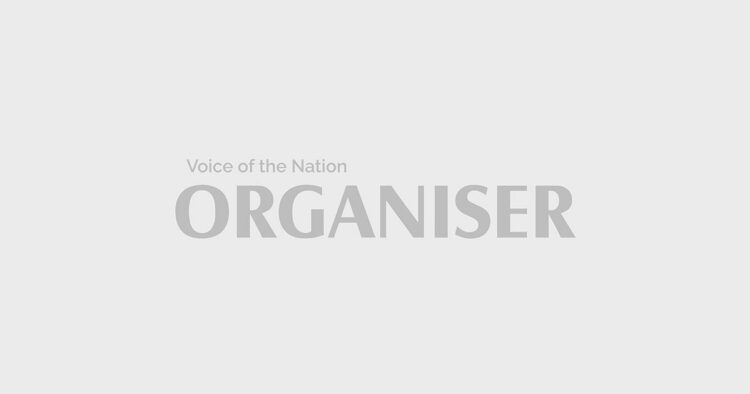During the past decades, we have seen scant concern and planning of bureaucracy on health of common man. Our present model of primary healthcare has failed miserably to reach out to health needs of the population. The recent World Bank survey showed nearly 45 per cent people of Uttar Pradesh depend on traditional healers and quacks. Only about 10 per cent have access to government facilities, while over 40 per cent have to consult private doctors.
For 60 years, no one has dared to ask why should bureaucrats be ?Mai Bap? of Health Ministry, unless they are doctors as well. Similarly why did Indian Medical Association (IMA) take 60 years to question the involvement of NGOs, which are run by social scientists who have never studied the ABC of science in their life, leave aside the medical science. If you go deep in their working hardly any doctor or nurse is on their pay role, leave aside their full involvement in planning and management. We have inherited our bureaucracy from England. They have completly transformed themselves and made their system more accountable to ordinary citizen, but Indian bureaucracy has not changed a bit.
An ?eye opener? exercise for me in the recent past was a ?pilot project? of Basti Sevika Training Programme, jointly conducted by Vatsalya Women, Child and Youth Development Centre, Delhi Gynaecologist Forum and Society of Expert Group on Adolescent Health in 2003 and 2004. In the feed back sessions, each Basti Sevika was thrilled and confident that for 50 per cent of family health problems in slums, she herself has the answer and for rest 50 per cent she can become a big link between society where she lives and the medical fraternity. This gave the IMA clear direction to go forward to focus on common man'sproblem aggressively.
Health is an issue of social justice and human rights. The importance of health education regarding any health issue may be clearly obtained by asking a simple question from public e.g ?which health information has changed the life of a common man? or ?name the discovery which saved highest number of human lives in last 100 years??. Most literate non-medical persons would vote for ?penicillin??the first antibiotic discovered by Sir Alexander Fleming in 1928. This paved the way for the ?antibiotic era? through the discoveries of a large number of antibiotics, which have been successfully used to combat many deadly infections, thus saving millions of human lives. True. But the correct answer is not ?penicillin? or any other antibiotic or even any other so called ?drug?.
The most important discovery of 20th century is one of the simplest and cheapest thing under the sun?a little bit of salt and sugar dissolved in a glass of water in WHO's guided proportion. In medical term, it is called ?Oral Rehydration Solution (ORS). Gastro-enteritis, cholera and other intestinal infections, which can cause severe dehydration, are still rampant in the developing countries like India. In such cases ORS is the only life saving option. In fact, the simple salt-sugar solution really saved billions of human lives, most of them were children and their total number is far than the number of lives saved by any of the antibiotics in the world. Between 1980 and 2000, oral rehydration therapy reduced the number of children below 5 years of age dying of diarrhoea from 4.6 millions to 1.8 millions per year worldwide.
Recent World Bank report shows that only 12 per cent of children suffering from diarrhoea in Uttar Pradesh were given the life saving oral hydration therapy against the national average of 16. It is a shame that we have failed to propagate the idea of ORS to the uneducated and poor people of our country. The people often curse their fate not being able to purchase expensive drugs to treat their dying children, but little they know that all they needed three cheap ingredicents i.e, salt, sugar and water, which all have at home. Only they lacked knowledge that the simple solution could save the lives of their babies.
Second glaring example is pulse polio programme. The 90 per cent people of this country feel that childhood vaccination are only ?polio drops?. Government propaganda and lot of efforts of private sector in addition are only focused on polio drops and what we have achieved in terms of total immunisation is again shameful. Only 23 per cent of infants aged upto two years get all vaccination in Uttar Pradesh as compared to 44 per cent nationally. This repeated family contact for ?polio drops? could have been utilised for so many things.
Shockingly, many indicators of mother and child have worsened in past decades. The proportion of babies with anaemia has increased and the proportion of malnourished infants has also increased.
But who is bothered. Bureaucracy is in complete inertia. Indian Medical Association has just started crying hoarse about increasing anaemia rate among Indians, draining billions of dollars in lost productivity and also it has emerged as one of the main causes of school drop-outs. UNICEF is also leaving no stone unturned in emphasising politicians and bureaucrats to wake up to malnutrition figures in the country.
In India, the Central Health Education Bureau was established in the Ministry of Health in 1956. In 1971, the Bureau suggested that each state should establish Health Education Units at the district level. But in many states it has not yet gained the appropriate momentum and are almost dead departments. On the contrary, Indian Medical Association under it Aao Gaon Chalen programme and ?Anaemia Free India Campaign? has been able to make more impact in public mind. It is high time to realise that in long term basis, involvement of community in their own health and health education will be much more appreciated to achieve the goal of ?Health for All? at least in our country.
(The author is chairperson of women Wing, IMA.)














Comments